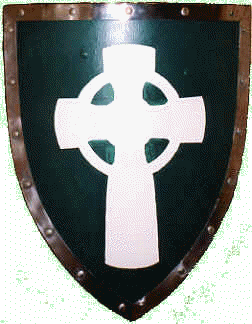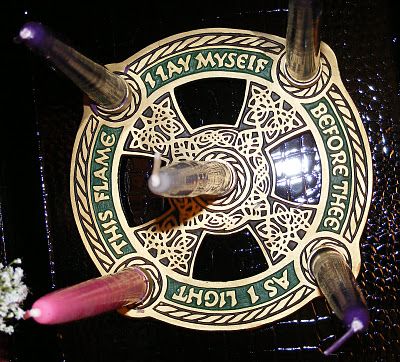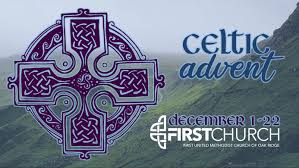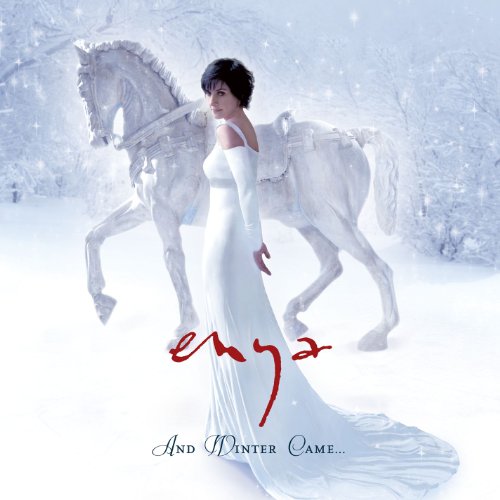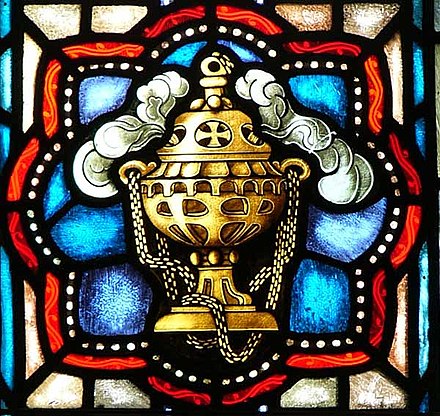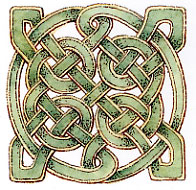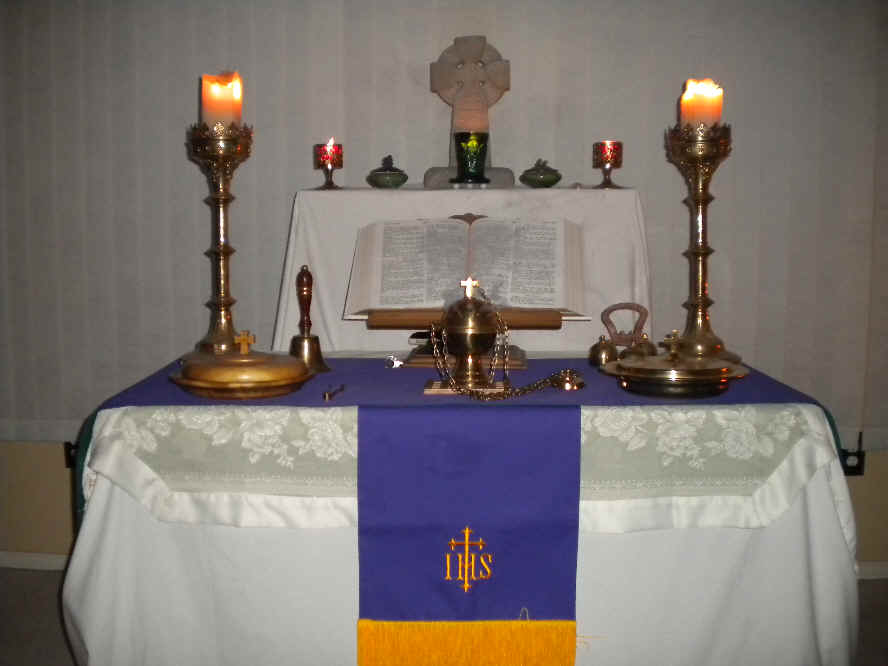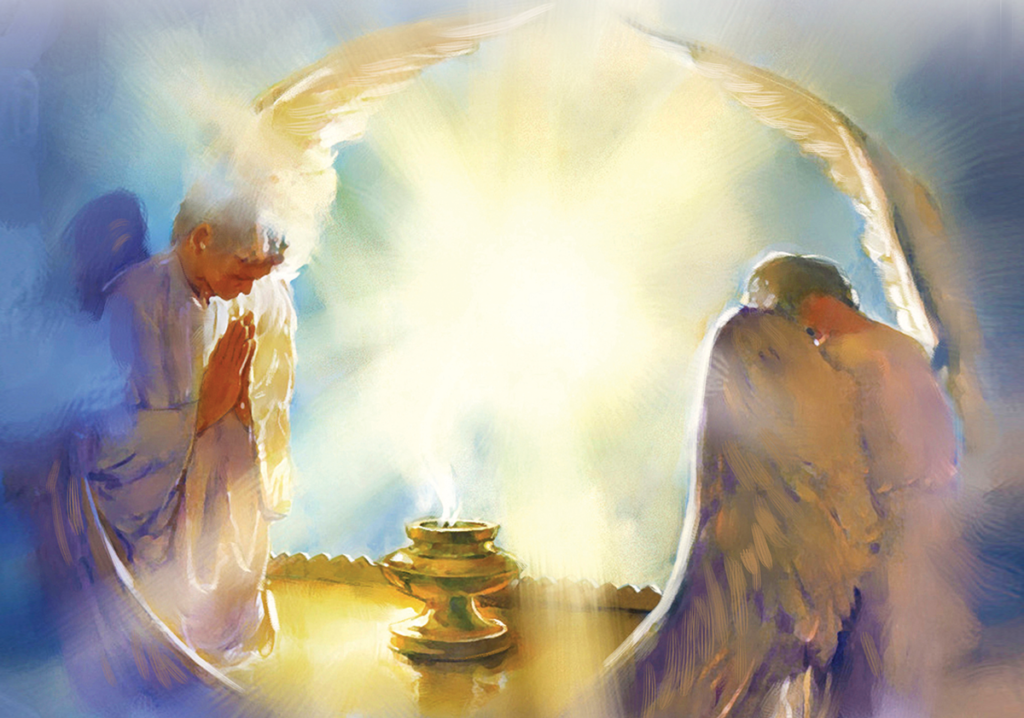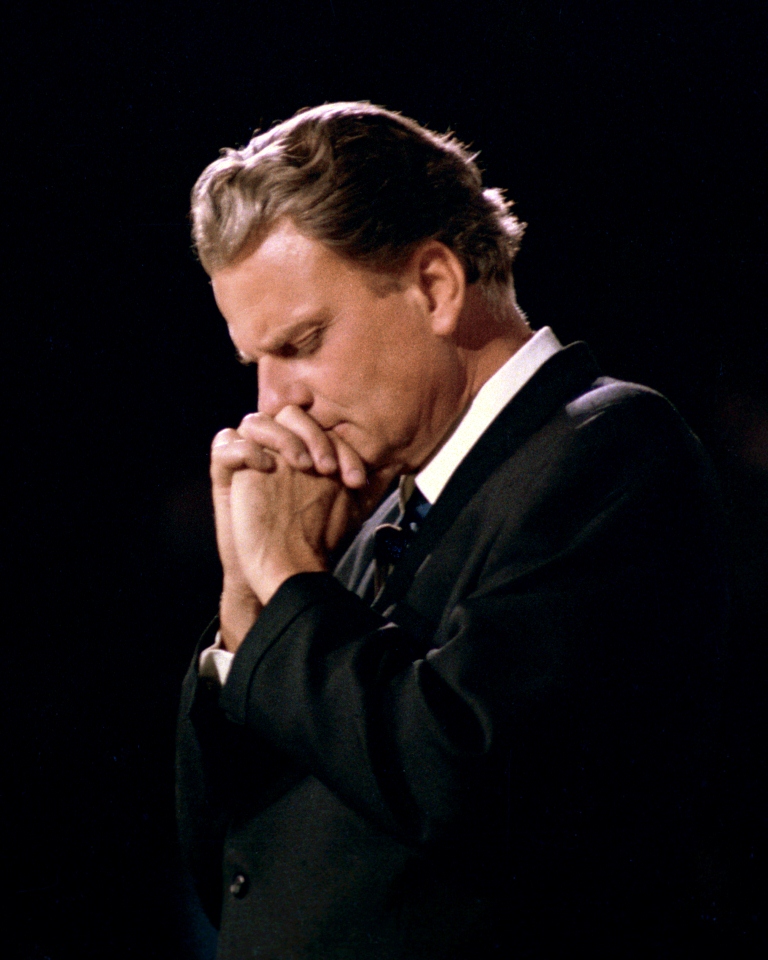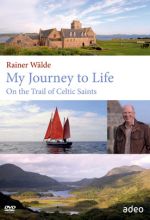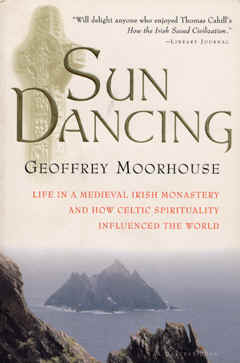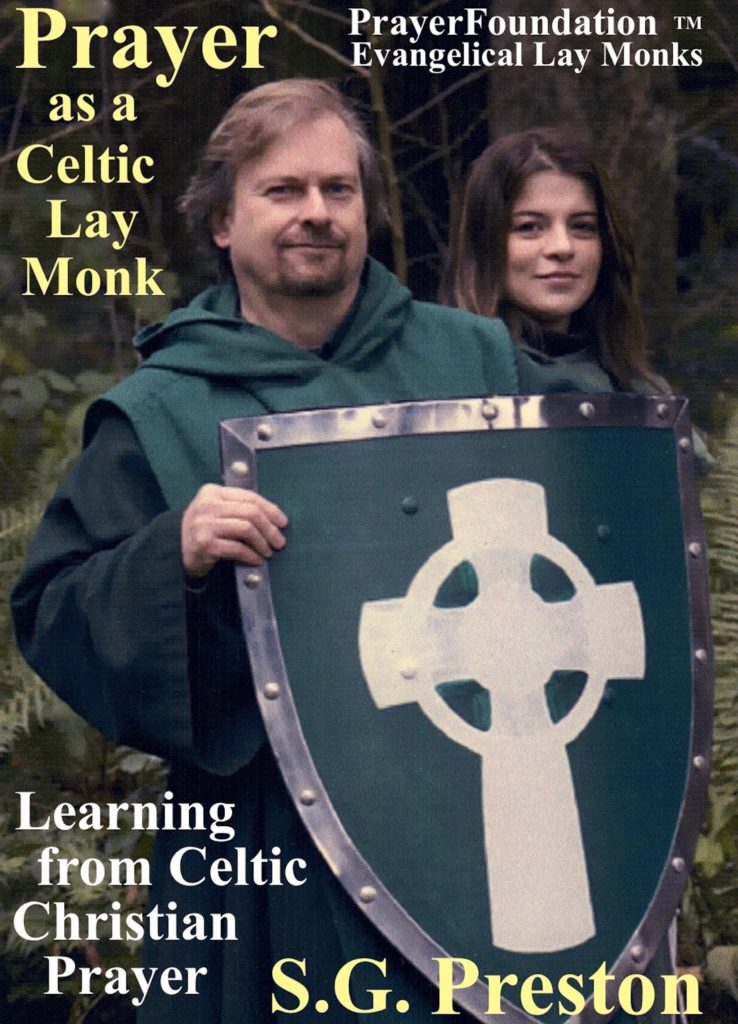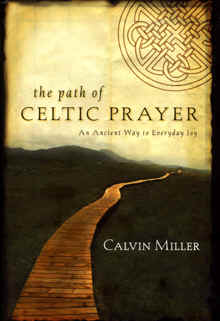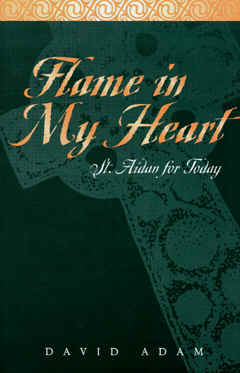AdVENt & cELtic AdVENt: AN AdVENt HyMN
The Classic Hymn: “O Come, O Come, Emmanuel” belongs to the Advent Season, since it celebrates the expectation of Christ’s first arrival, rather than his actual birth.
The most beautiful version of this Hymn is by the Irish singer, Enya, on her Album:
“And Winter Came”
(Just Click on the Album Cover shown Above, to listen to the Hymn on YouTube).
Celtic Advent and Eastern Orthodox Advent (Nativity Fast, St. Philip’s Fast) are always November 15 – December 24. Observance begins at Sunset on November 14.
In 2023 Western Advent (Roman Catholics and most Protestants) begins on Sunday, December 3, and ends on December 24
cELtic AdVENt / EaRLy CHuRcH AdVENt
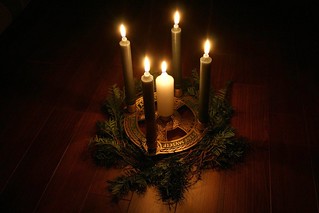
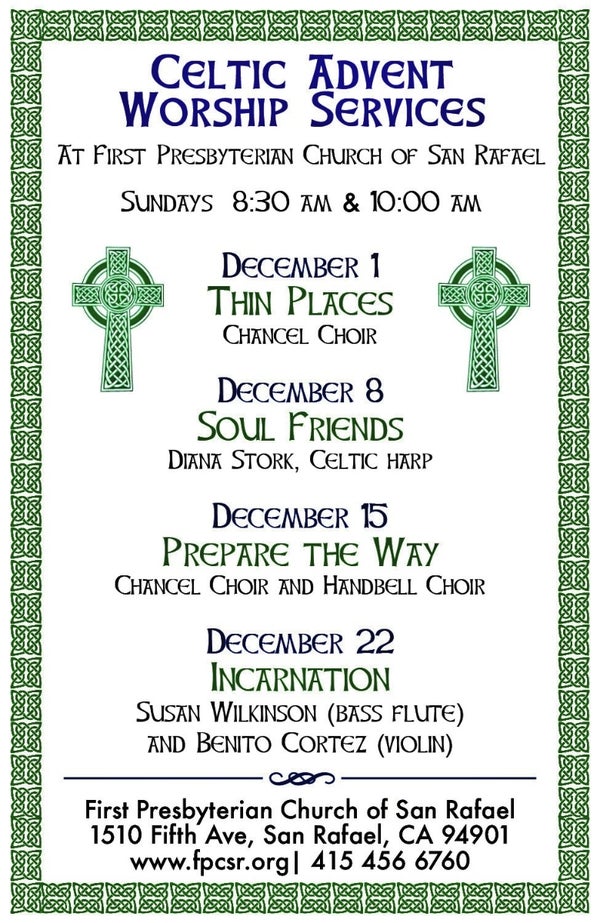
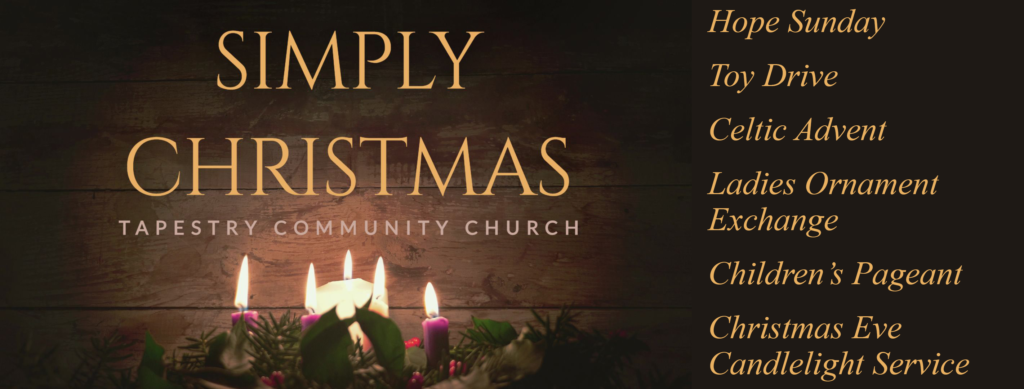
Advent & Celtic Advent
For those Christians that observe them, Advent is the Church Season just before Christmas. In what is referred to as the Western Church (Roman Catholics and Protestants, including Anglicans), observance of Advent Season occurs during the period of the four Sundays before Christmas.
The beginning of Western Advent can therefore fall any time between November 27th and December 3rd.
Advent ends on December 24th at sundown, the beginning of Christmas Eve. Our English word advent comes from the Latin word adventus, which means arrival. In the Latin Vulgate of Jerome, this was the word he used to translate the Greek word parousia, which in the New Testament refers to the Return (Second Arrival) of Christ.
So in Advent season we reflect on the two advents, or arrivals of Christ. On the Nativity, the birth of Christ, and also on the Return, or Second Arrival of Christ, which, since we do not know when it will be (or the time of the end of our own lives), we should always be ready.
Advent has historically been a time for reflection and prayer.
During Advent, we are looking forward to the first arrival of Our Lord.
Christ, the Messiah, will be born in Bethlehem, He will save us from our sins. On Christmas Day we will celebrate His Nativity: his birth. Christ’s Second Advent will be His Return, to judge the living and the dead; His kingdom shall have no end!
Let us use this time of preparation for the celebration of His First Arrival to especially prepare our hearts and lives for His Return.
From its origin in the 4th century and on, Advent Season was also a time of fasting. The fasting portion was first dropped by the Protestant Churches during the Reformation, and then during Vatican II (1962-1965) by the Roman Catholic Church, but is still observed in the Eastern Orthodox Communions (and by Celtic Christians!).
AdVENt & cELtic AdVeNt: CELEbRatiNG AdVENt
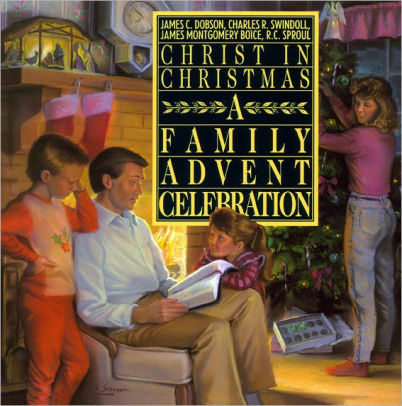
During the time of ancient Celtic Christianity, the entire Church, both Western (including the Celtic Christians), and Eastern (the Orthodox Communions, Oriental Churches, and Eastern Rite Roman Catholics) all celebrated a longer Advent Season as a lesser Lenten Fast.
It began on the same date every year: on November 15th. The Orthodox Church still observes it as beginning on this day.
In the early Church, and going back also through the Old Testament era; and still currently in Eastern Orthodox and Roman Catholic practice, every (liturgical) day officially begins at sundown of the previous day. In this case, sundown on the 14th, begins the liturgical observance of the 15th of November.
Observance of Advent has taken place at least since the 4th Century (300’s A.D.) Like Lent, it originally was a season when new Christians studied in preparation for being baptized.
In the early Middle Ages, Advent was the Season of preparing oneself for the Second Advent of Christ. It was a season of repentance, and of dedication to prayer.
Advent seems to have begun with the observance of the Celtic monks in Gaul, which was taken and combined with a similar three to six-week period of fasting that had been observed in the city of Rome before Christmas.
France was known by the Roman name of Gaul in this era, and was still a Celtic country. This was even before St. Patrick converted Ireland to Christ. There were as yet no Irish Celtic monks!
The Gallic fast in modern-day northern France began at sundown, after the celebration of the Feast Day on Nov. 11th of Martin of Tours. He was a Roman Cavalry officer who became a Christian, and Founded the first monastery in Gaul.
Combining the Gallic and Roman fasts, and its later adoption by the Eastern Episcopal Sees of the Church, resulted in Advent being observed universally among Christians, from Nov. 15th until sundown on Christmas Eve.
Advent began, and still so begins in the eastern Church, on sundown of the Feast Day of the Apostle Philip (Nov. 14th) — this is why Eastern Orthodox sometimes refer to the Advent Season as St. Philip’s Fast, or The Philippian Fast.
It was celebrated in common first by Celtic Christians and by Rome, and later adopted by Eastern Christians. The Bishop of Rome and the Orthodox Bishops and Patriarchs had not yet separated into two different Communions — the Great Schism would not take place until many centuries later, in 1054 A.D.
We here, in common with some other individual Protestants (and some individual Roman Catholics, as well) have decided to observe the longer Celtic Advent season. We do not, of course, require this observance of anyone else.
With the secular world beginning their secular celebration of secular Christmas earlier and earlier (we noticed Christmas lights already on sale this year in some stores two weeks before Halloween), celebrating Celtic Advent is a way of extending a more spiritual observance of the true “Holy-day” season. A way of “putting Christ back into Christmas” for an additional two more weeks!
We are dedicating the “extra” two weeks of the ancient Celtic Advent observance to the original emphasis of preparation in repentance and prayer, in celebration of Christ’s Second Advent, and will continue with the following four weeks emphasizing preparation for the celebration of Christ’s First Advent, His birth in Bethlehem.
If one is (partial) fasting, as we will be, remember that in the Celtic tradition, Sundays (The Lord’s Day) are exempt, as are Feast Days, and in the U.S., the wonderful “Feast Day” of the Holiday of Thanksgiving (to God) is observed during Celtic Advent (see additional comments regarding fasting in the Column to the Right).
The secular “Xmas” holiday is devoted to the celebration and observance of materialism and consumerism. It observes its annual “advent” of “Santa Claus.” Not, of course, the real Christian St. Nicholas, but a badly caricatured counterfeit of him, accompanied by a total rejection of Christ.
It can be a joyless time of extreme loneliness and striving for many poor souls without hope in this world or the next; those without the personal knowledge of Jesus Christ. A time when suicides increase dramatically.
How important it is then to manifest the Lord in our daily lives, and to introduce Him to those who do not yet know Him!
EAStERN ORtHOdOX AdVENt
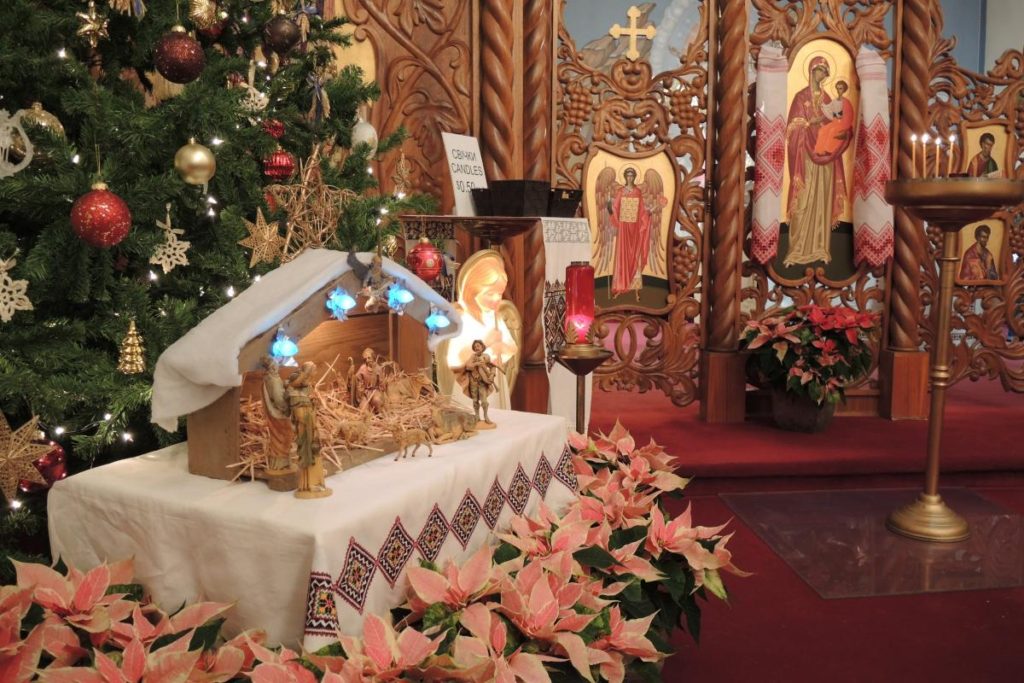
For the 40 days prior, Orthodox Christians fast in spiritual preparation for Christmas.
Known as Christmas Fast, Nativity Fast, or St. Philip’s Fast, starting on the 15th of November, (sundown on the 14th) the day after St. Philip’s Feast Day.
“…During any fasting period, Orthodox Christians try to pray more…
…Fasting is a kind of ‘time-out’ and it helps us to cleanse ourselves, and it helps us to pray and not being weighed down with heavy, rich food, we are more easily able to examine ourselves and our lives, thus it is very important in the spiritual preparation for Christmas…”
-From “Orthodox Christmas” by George Hawkins
WEStERN cHuRcH AdVENt

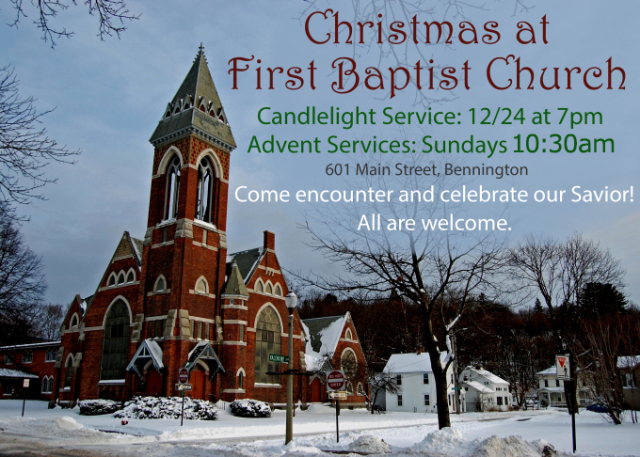
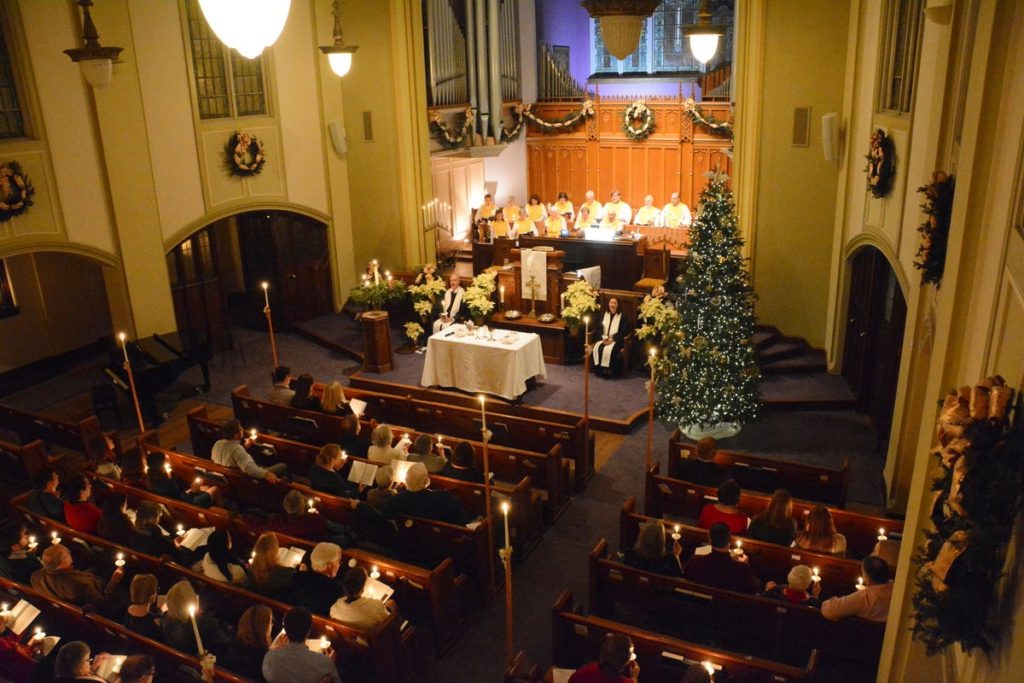
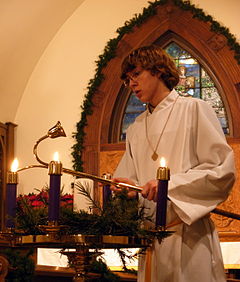
Western Advent (Roman Catholic and most Protestants) began in the tenth century, when Pope Gregory I (“The Great”) shortened the length of the Fast (and observance of the Advent Season) to the first four Sundays before Christmas.
He also declared the Advent Season to begin the Church Year. Eastern Orthodox begin the Church year on September 1st, which is the date historically given for Christ announcing His Mission in the Synagogue (Luke 4:16-22).
Later, when Church Season colors were adopted, Advent received a Purple color, like Lent. When the Protestant Reformation occurred, Protestants retained the Roman Catholic dates, but rejected the fasting part.
400 years later, the Roman Catholic Church would also reject the fasting portion. Eastern Orthodoxy still retains the same dates of observance as those practiced by the early Celtic Christians, and by Roman Catholics before the changes of Pope Gregory I.
Lutherans have changed the color of Advent, and of the Advent Candles, to Blue, and many other Protestant Churches have followed them in adopting these changes. Other Protestants use the Blue-Purple color for Advent and a Red-Purple color for Lent, to differentiate the two Seasons.
Advent was mostly forgotten in the nineteenth century, as far as observance goes, as Epiphany still is.
The latter half of the Twentieth Century saw a resurgence of interest, as emphasis was placed on preparation for the coming Christmas Nativity celebration, rather than on the Second Advent (Return) of Christ, as had been the case historically.
Current Advent celebration, by emphasizing preparation for the Nativity, has made Advent more of a family-oriented Church Season, and especially more “child-friendly.”
Some of the current observances of Advent, like the Advent Wreath and the Advent Calendar, have also contributed to this.
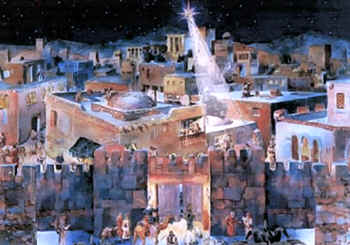
tHE AdVENt WREAtH
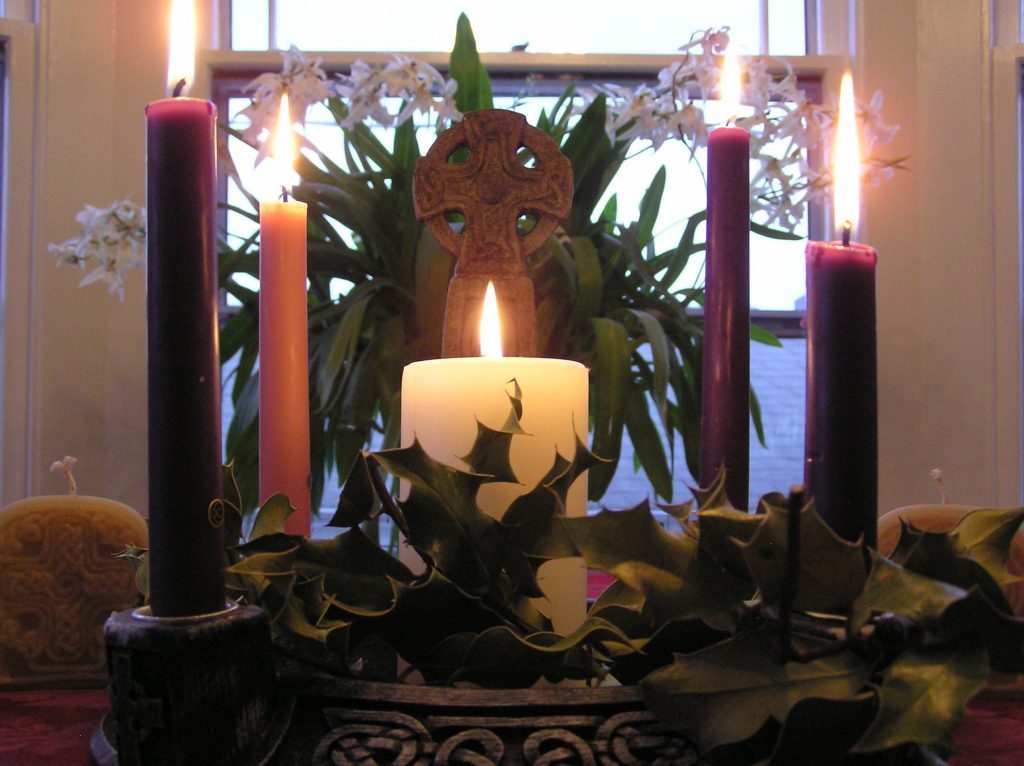
Your Church may well have an Advent Wreath already in the Sanctuary, but you will probably want one in your own home, too!
Use of the Advent Wreath, originally a German Lutheran practice, spread first to Scandinavia, and now throughout much of Protestantism, and has also been adopted by the Roman Catholic Church.
The historic candle colors, three Purple and one Rose (Pink), with an optional White central “Christ Candle,” were first replaced in most Lutheran Churches by Blue Candles, and this color change has now spread to many other Protestant Denominations as well.
Traditionally the wreaths are made with evergreen boughs, but we just add some cut evergreen boughs to ours (a Celtic-style circular candle-holder).
We don’t place it in our Monastery Chapel (it certainly could be placed there!), but instead on the kitchen counter/table where we usually take our meals. It just seems more “family” there.
In 2005 we changed our candles’ colors to three dark Forest Green and one Light Green, which we thought to be more in keeping with both our Celtic wreath and our Celtic Monastic esthetics.
Our central “Christ Candle” (not to be lit until Christmas Eve) is a much thicker candle, and White.
We use natural beeswax candles for all of our candles, so it is actually more of an Ivory or even a light Golden color: a Natural “Bee-White.”
Gold or Ivory have historically been acceptable alternatives for White, when White is called for.
IF YOU ARE ALSO OBSERVING ADVENT AS A “LESSER LENTEN” FAST
Count the days from November 15 to December 24, and you will find that the total number of days during the entire Season is 40.
So it is not 40 days of actual fasting. Also, the Orthodox Communions have always observed this as a lighter, easier, less strict Fast than Lent, which they call “Great Lent.”
Both are what are called partial fasts, where you are giving up a particular type or types of food — you are still eating something!
Or Intermittent Fasting can be practiced, where you eat during fewer hours of the day — stopping at 4 or 5, or 6:00 pm, or not eating breakfast, but waiting until lunch to eat; or only eating during a 4 hour period each day.
Some people should never fast: pregnant women, small children, the elderly, those who are sick, diabetics;
every individual can be different, and this is why your Physician should be consulted first before you undertake any fasting.
Eastern Orthodoxy celebrates their Fasts as seasons of joy rather than of hardship and privation and, well, gloom,
as was sometimes done in the West, particularly during the Middle Ages.
As Our Lord taught us:
“But you, when you fast, anoint your head, and wash your face; so that you do not appear to others to fast, but to your Father, who sees in secret.
And your Father, who sees in secret, shall reward you openly.”
-Matthew 16:17-18
The ancient Celtic Christians did not fast on The Lord’s Day (Sunday).
Every Sunday is a celebration of the Resurrection of Christ, and is therefore considered a “Feast Day.”
Eastern Orthodox observe this also, but in addition may not fast on Saturdays (the Old Testament Sabbath).
They also tend to have more Feast Days than modern Protestants!
American Calendars will list Thanksgiving (to God), of course (Canada also celebrates this, but on a different day).
Scots and some others celebrate St. Andrew’s Day: Nov. 30th.
So Protestants are left with at least six additional exempt, or free days (to replace the six Saturdays that fall during this Season).
These can be used as needed when invited over to the homes of friends or relatives
(or when having them over at your own home) or simply whenever desired.
And as always, additional times of prayer, and your “heart attitude” during any fasting period
have always been considered to be more important than simply the act of “not eating” something.
THE AdvENt CaLENdaR
A DIFFERENT CALENDAR FOR EVERY AGE GROUP
A typical Advent Calendar is made of glossy-cover cardboard with 24 little Doors, one of which is opened each day from the first day of December until Christmas Eve.
The little Door when opened may show something to do with the Nativity Story and birth of Jesus, or just something Christmas-related: holly, bells.
_________
Yes, there are also “secular” Advent Calendars…no thanks!
You can do an Internet search for “religious Advent Calendar.”
It is a nice family event, especially for children, as it provides an interesting month-long “countdown” to Christmas and the celebration of Our Lord’s birth.
MANY DIFFERENT DESIGNS
Different Advent Calendars are aimed at all different ages, so you can obtain one that is just the right age level for your children, whatever their current ages.
Or you can get one like that shown in the photo (At Left, a little lower down the page) –– not only is it Bible and Nativity based, but on the back of each little door is a Scripture for the day –– only some Advent Calendars have this added blessing!
HISTORY:
As far back as the early 1800’s, German families might do the “countdown” of the Advent Season by marking a door or wall daily with a chalk line, or light 24 candles, one more each day.
Some families would hang 24 little pictures on the wall.
Use of today’s Advent Calendars is of fairly recent practice, appearing first in a Protestant area of Germany around 1851, with the first known hand-made Advent Calendar, but being almost immediately adopted by Roman Catholics as well.
____________
Other types are ones with chocolates (first seen in 1958), or larger Christmas tree boards with 24 little presents hanging on them, one to be opened each day.
In Scandinavian countries, entire buildings are sometimes used as Advent Calendars, with a different lighted window showing something each evening.
The first printed Advent Calendar is said to have been published by a Swabian German named Gerhard Lang, in 1908. It is certain that he published the first one with little windows/doors that opened, in the early part of the twentieth century.
_________________
SOURCES:
“History of Advent” (netglimpse.com/holidays).
Wikipedia: “Advent”.
Wikipedia: “Advent” Calendar.
“Orthodox Christmas” by George Hawkins (Geocities: “Faces of Russia”)
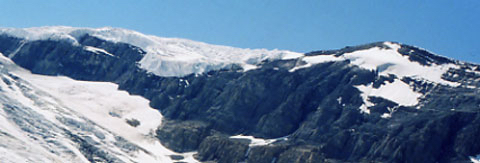

From the Book: "The Kneeling Christian" by An Unknown Christian
“People don’t care how much you know, until they know how much you care.”
____________________
“God wants me to pray.
The devil does not want me to pray, and does all he can to hinder me.
He knows that we can accomplish more through our prayers than through our work.
He would rather have us do anything else than pray.”
____________________

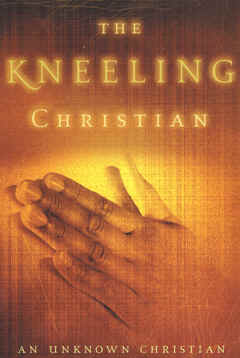

“God has many things to say to us. He has many thoughts to put into our minds. We are apt to be so busy doing His work that we do not stop to listen to His Word.”
______________________________
“Will any thoughtless word of criticism of anyone move anyone nearer to Christ?
Will it even help the utterer of that fault-finding to be more like the Master?
Oh, let us lay aside the spirit of criticism, of blaming, of fault-finding, of disparaging others or their work.
Would not St. Paul say to us all, ‘And such were some of you, but you are washed’?
(1 Corinthians 6:2)”
_____________________
“The real art of conversation is not only to say the right thing at the right time, but also to leave unsaid the wrong thing at the tempting moment.”
____________________
“Our value to God and to man is in exact proportion to the extent in which we reveal the glory of God to others.”
____________________
-An Unknown Christian (From: “The Kneeling Christian”)

This Website: PrayerFoundation Evangelical Lay Monks ™ Built by: S.G. Preston Ministries ™
Copyright © 1999-2024 S.G. Preston. All Rights Reserved.
Photos & Text Copyright © 1999-2024 S.G. Preston. All Rights Reserved.
